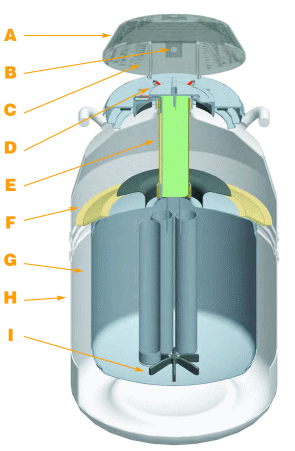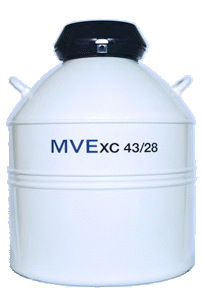Safety in the Laboratory

Safety in the Laboratory |
 |
Skin contact with liquid or cold metal cause freezing / frostbites of exposed tissue due to the very low temperature (boiling point: -196 °C) Eye contact already with vapor may cause a stinging sensation Risk of asphyxia due to liberating nitrogen (and deplacing oxygen); as nitrogen is odourless, colourless and tasteless, this may occur without any sensation or prior warning Risk of explosion due to expansion ratio of 1:694 when heated up → never close a container well, which contains LN2 see "SI Liquid Nitrogen" |
 |
Always use safety glases or better a face protection. Optical glasses are not allowed. Always use special protective gloves against the cold (Kevlar); those should be waterproofed that no accidentally spilled liquid nitrogen may enter Use closed shoes from leather. |
  |
Store Dewars for liquid nitrogen only in well ventilated places and protected against tumble over or breakage Only use clean and dry Dewars Do not left Dewars with liquid nitrogen open: oxygen of the air may condense into the liquid nitrogen and accumulate provoking the risk of a combustion in the case of contact with flammable (organic) matter |
|
| |
|
General construction of a Dewar: a) Tamper proofed lid b) Locking tab c) Easy maintenace lid , d) Colour coded lid numbering system e) High strength neck to reduce nitrogen loss f) Advanced vacuum system g) Insulation h) Superior strength aluminium construction i) Spider desgin for easy retrival and insertion of canisters |
 |
|
MVE XC 43/28 Number canister: 6 Canister height: 28 cm Canister diameter: 5.6 cm Canes/canister: ~ 12 Cryovials/Cane: 5 LN2 [l]: 42 Evaporation/d [l]: 0.14 Working range [d]: 190 Neck diameter [mm]: 70 |
 |
